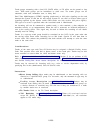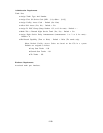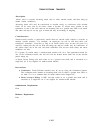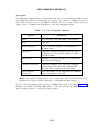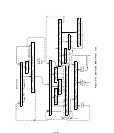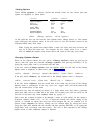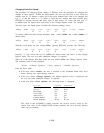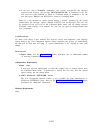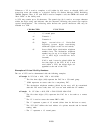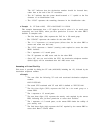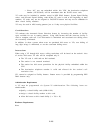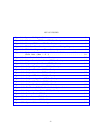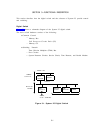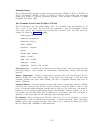VIRTUAL FACILITIES (V2)
Description
A virtual facility (VF) is a call routing facility that is not defined by the physical facility
(trunk) over which calls are routed, but is instead defined by a combination of access codes,
authorization codes, and coded characters that allow special handling of the destination
telephone numbers.
VFs can be used to automatically route calls via other carrier networks,
private networks, or tie trunks.
Up to ten virtual facility numbers (VFNs) may be administered. Each stored number may
be up to 28 characters in length and is associated with a code in the range of #190 to #199.
The first digits in a stored VFN must be the facility access code (FAC) for a physical trunk
group over which the call is to be routed. A series of digits and special characters are stored
following the FAC to define additional routes,
Inter-Exchange Carrier (IXC) codes,
identification codes, or instructions concerning special handling of the destination telephone
number. When a VF has been defined using a particular trunk group, it has full access to all
trunks in that group. It is considered “busy” only when the physical trunk group is busy.
When a VF is dial accessed by a system user, calling restriction is based on the station’s
administered calling restrictions.
A system user may gain access to a VF by:
● Dialing the VF code (#190-#199).
● Storing the VF code as the first digits on a REP DIAL button. Other digits (for
example, the destination telephone number) may be stored following the VF code.
● Dialing a System Speed Dialing code (#100-#189) that contains a VF as part of the
stored number. The VF code must be the first digits stored in the speed dialing
number.
● Dialing a Personal Speed Dialing code (#20 -#26) that contains a VF as part of the
stored number. The VF code must be the first digits stored in the speed dialing
number.
● Using Automatic Route Selection (ARS) and having a VF as the route selected by
ARS.
Note: The system can be administered to allow or restrict dial access for each VF
code. If dial access is restricted (system default), a VF may be accessed only when used
in an ARS routing pattern.
When virtual facilities are used in ARS patterns, they assume the same capabilities and
restrictions as physical facilities. For example:
● Each VF may have a digit deletion and insertion scheme associated with it.
● Selective restriction of a VF may be accomplished by assignment of Facility
Restriction Levels (FRLs).
If the VF is used in the first position of a routing pattern, calls may queue on it if all of the
routes are busy.
2-258



